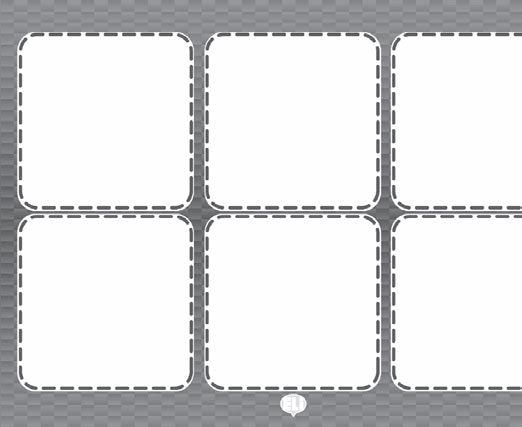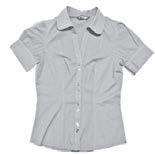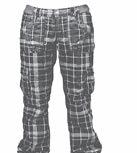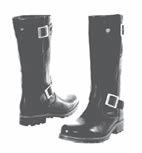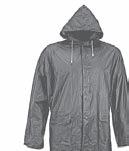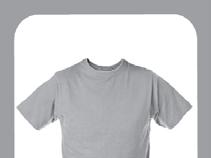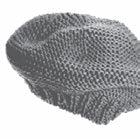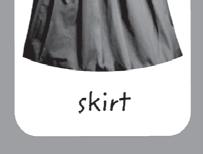Pack your bag
Level
Pack your bag is aimed at students who have reached level A1 of the Common European Framework of Reference.
Language aims
• Help with the learning process, revision and correct use of vocabulary and language structures related to clothes.
Materials
The game Pack your bag consists of:
• a pack of 66 cards
• 36 boards with the lists to use also for playing bingo
Each board contains a list of clothes and accessories to bring with you while travelling.
On the back of each list there is a bingo playing board with six photographic images of clothes and accessories. The playing cards present the photos of the various clothes items together with the written word which can be seen below the image. They can be used as mini-flashcards to help with comprehension of new vocabulary, as well as for game play.
Rules of the game
Bingo
Each player receives one or more bingo cards. The leader shuffles the deck of playing cards and chooses one card at a time, which he/ she shows to the players. If a player has the same board on their bingo sheet, he/she covers the corresponding square. The game can be played at a lower level by simply showing the image and saying the name of the item, or at a higher level by pronouncing the item without showing the photo. The player who covers all of his/her 6 squares first is the winner.
In my bag...
The game leader distributes the entire pack of 66 cards to the players and the boards. Each player then has some cards in hand and a ‘suitcase’ containing a list of the items he/she needs to pack. The first player asks the player next to him/her (for example): I need pyjamas. Have you got the pyjamas?
If the player has the card with the pyjamas, he/she answers: Yes, I have (with the short form) and hands over the card to the player who asked. To practise the extended form, the players can use: Yes, I have got it / No, I haven’t got it or Yes, I have got them / No, I haven’t got them, according to the item requested (for singular or plural nouns see Grammar chart.You may also want to point out that uncountable nouns are words which cannot be counted. They only have a singular form e.g. sun cream, shaving foam, toothpaste, make-up). The player answers: Thank you and takes the card. He/She can then ask another player a different question.
If a player doesn’t have the card requested, he/she replies: No, I haven’t and play turns to this player who asks another player for something in his/her suitcase.
Each item can be requested several times, and once obtained it must be handed over if another player requests it. The winner is the first player to obtain all of the items in his/her suitcase.
GRAMMAR CHART: Singular and Plural items
SINGULAR
PLURAL cap – woollen hat – bag – blouse – nightdress – shirt – hat – overcoat – cardigan – mobile charger – belt –necklace – suit – swimming costume – tie – sun cream – hoodie – silk scarf – blazer – anorak – gilet – jacket –skirt – raincoat – camera – T-shirt – vest –polo-neck jumper – V-neck jumper – scuba mask –umbrella – comb and hairbrush – puffer coat – poloshirt – perfume – razor – shaving foam – bra – scarf – shampoo – beret – toothbrush – toothpaste – skirt suit – make-up – tracksuit – ski suit – dress
bermuda shorts – socks – slippers – flip-flops – tights –swimming trunks – gloves – jeans – flippers – underpants – sunglasses – shorts – trousers – pyjamas – knickers–sandals – high-heeled shoes – trainers – shoes – flat shoes – walking boots – boots
Vocabulary in alphabetical order 1.
and hairbrush
14. dress 15. flat shoes
16. flip-flops
17. gilet
18. gloves 19. hat 20. high-heeled shoes 21. hoodie
35. razor and shaving foam
36. sandals
37. scarf
38. scuba mask and flippers
39. shampoo
40. shirt
41. shoes
42. shorts
43. silk scarf
44. ski suit
45. skirt
46. skirt suit
47. slippers
48. socks
49. suit
50. sun cream
51. sunglasses
52. swimming costume
53. swimming trunks
54. T-shirt
55. tie
56. tights
57. toothbrush and toothpaste
58. tracksuit
59. trainers
60. trousers
61. umbrella
62. underpants
63. V-neck jumper
64. vest
65. walking boots
66. woollen hat
IN SUMMER, IN WINTER
Divide the players in teams and say: It’s summer time, what can I put in my suitcase?
Each team will list the items to pack in the suitcase. The game can have a time limit or can end when one of the teams says Stop! Teams gain 1 point for each correct answer, while for each wrong answer they lose a point. The winner is the team with the highest score. The game leader can also say: It’s summer time, what have I not to put in my suitcase? / What do I not need? and: It’s winter time, what can I put in my suitcase? It’s winter time, what have I not to put in my suitcase? / What do I not need? Players can also practise the structure: What do you wear in winter/summer? In winter/summer I wear…
WINTER:
woollen hat, socks, overcoat, cardigan, tights, hoodie, anorak, gilet, gloves, jeans, vest, polo-neck jumper, V-neck jumper, trousers, puffer coat, trainers, shoes, walking boots, scarf, beret, boots, tracksuit, ski suit, dress...
SUMMER:
bermuda shorts, cap, scuba mask and flippers, sunglasses, flip-flops, sandals, swimming costume, swimming trunks, flat shoes, shorts, T-shirt, vest, sun cream, polo-shirt, silk scarf...
The following list can be useful in order to pack either the winter suitcase or the summer one:
skirt suit, suit, gilet, blouse, shirt, hat, nightdress, pyjamas, trousers, tie, jacket, skirt, jeans, slippers, belt, necklace...
ALWAYS IN MY BAG/NEVER IN MY BAG...
In order to practise adverbs of frequency the teacher can ask the students:
What do you usually pack in your bag (when you go to the mountains/sea)?
What do you often pack in your bag (when you go to the mountains/sea)?
What do you always pack in your bag... What do you never pack in your bag...
Possible answers:
I always pack my… mobile charger, shampoo, toothbrush and toothpaste, pyjamas…
I never pack... an umbrella, my camera, perfume, sunglasses, comb and hairbrush…
I often pack my high-heeled shoes, a dress, make-up…
I usually pack... a pair of jeans, my favourite hoodie... I seldom pack… a suit or a tie…
These are only some suggestions for games and activities using Pack your bag. The game can be used as the basis for many other activities and is an effective teaching aid which stimulates English language learning.


